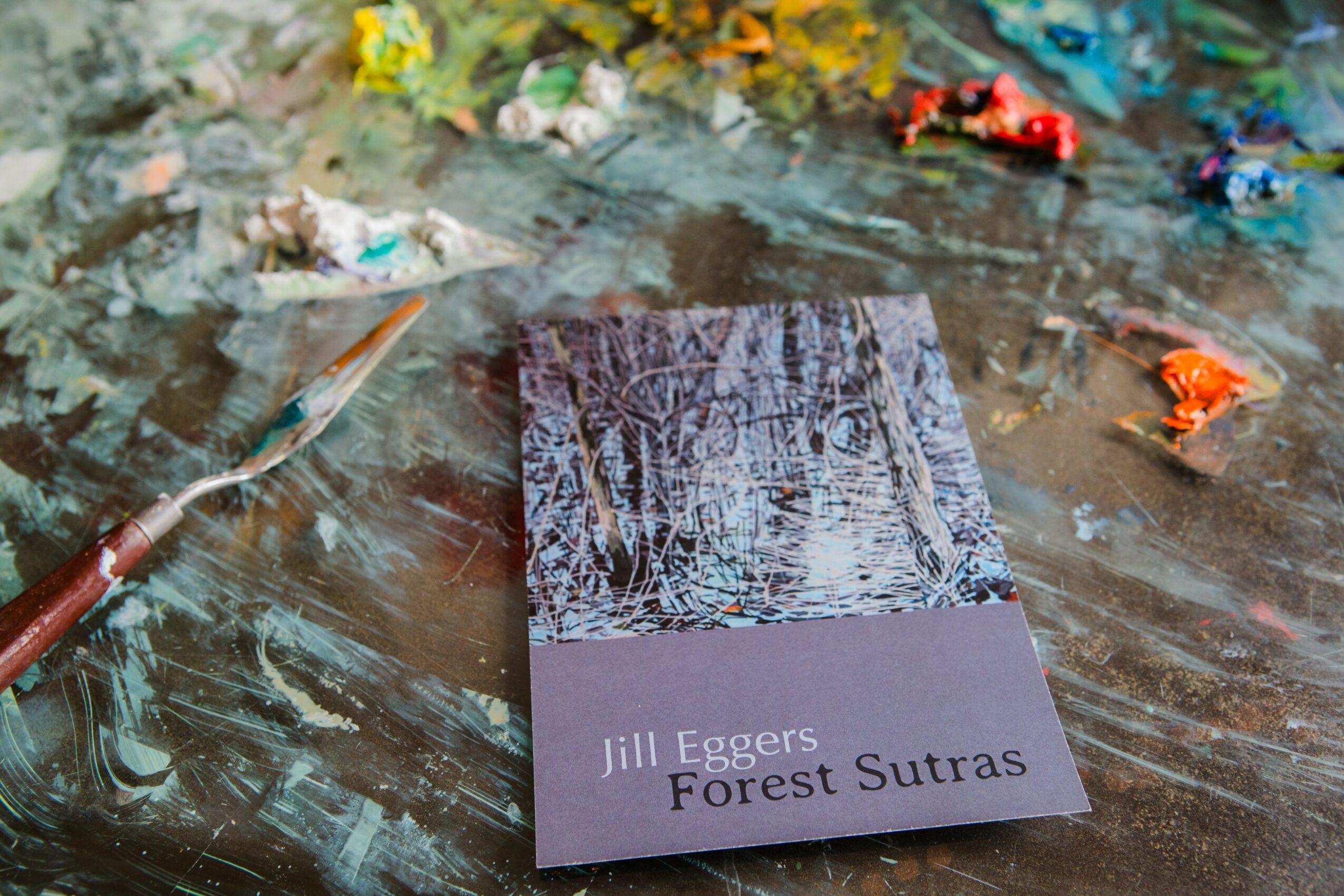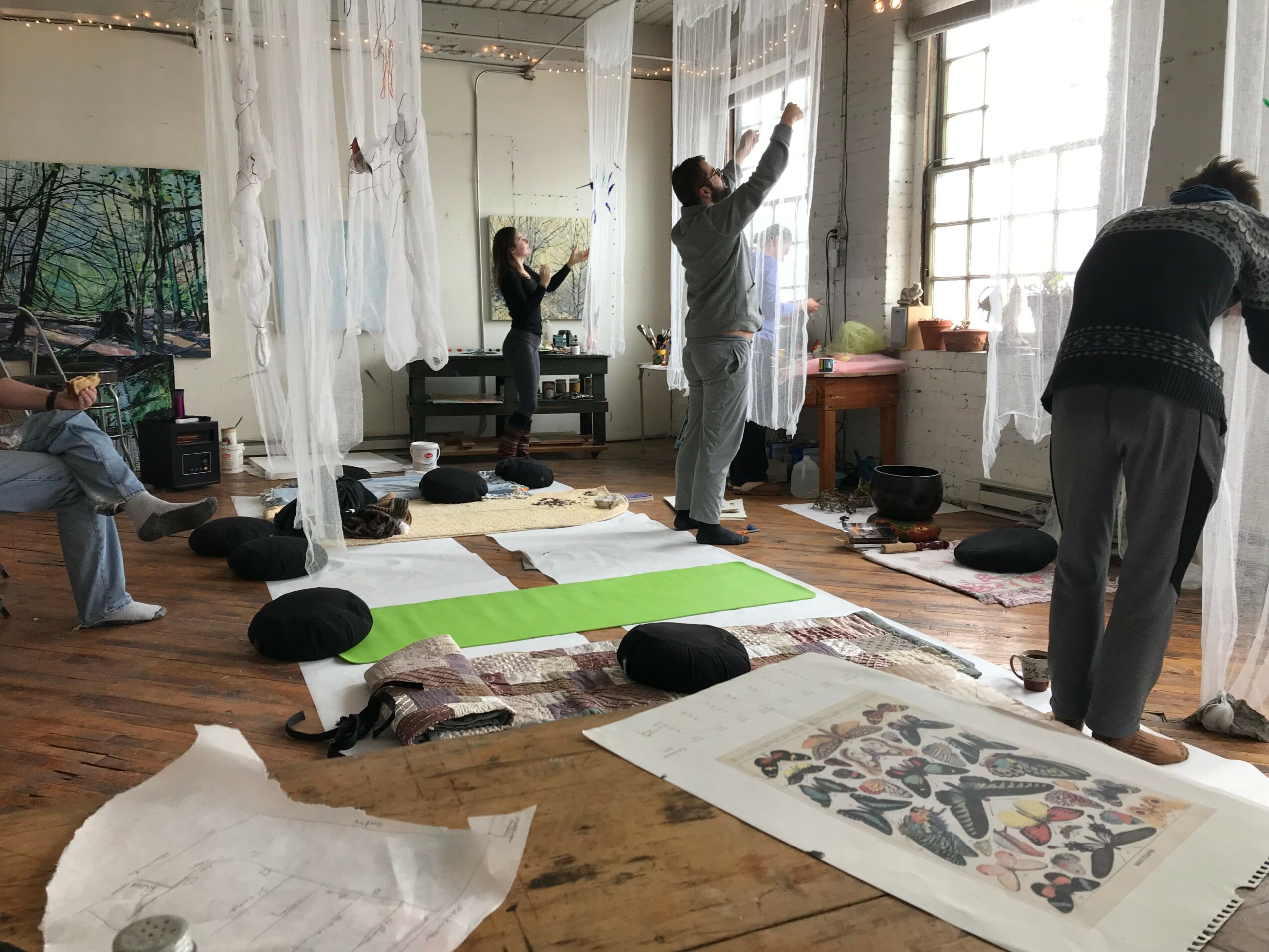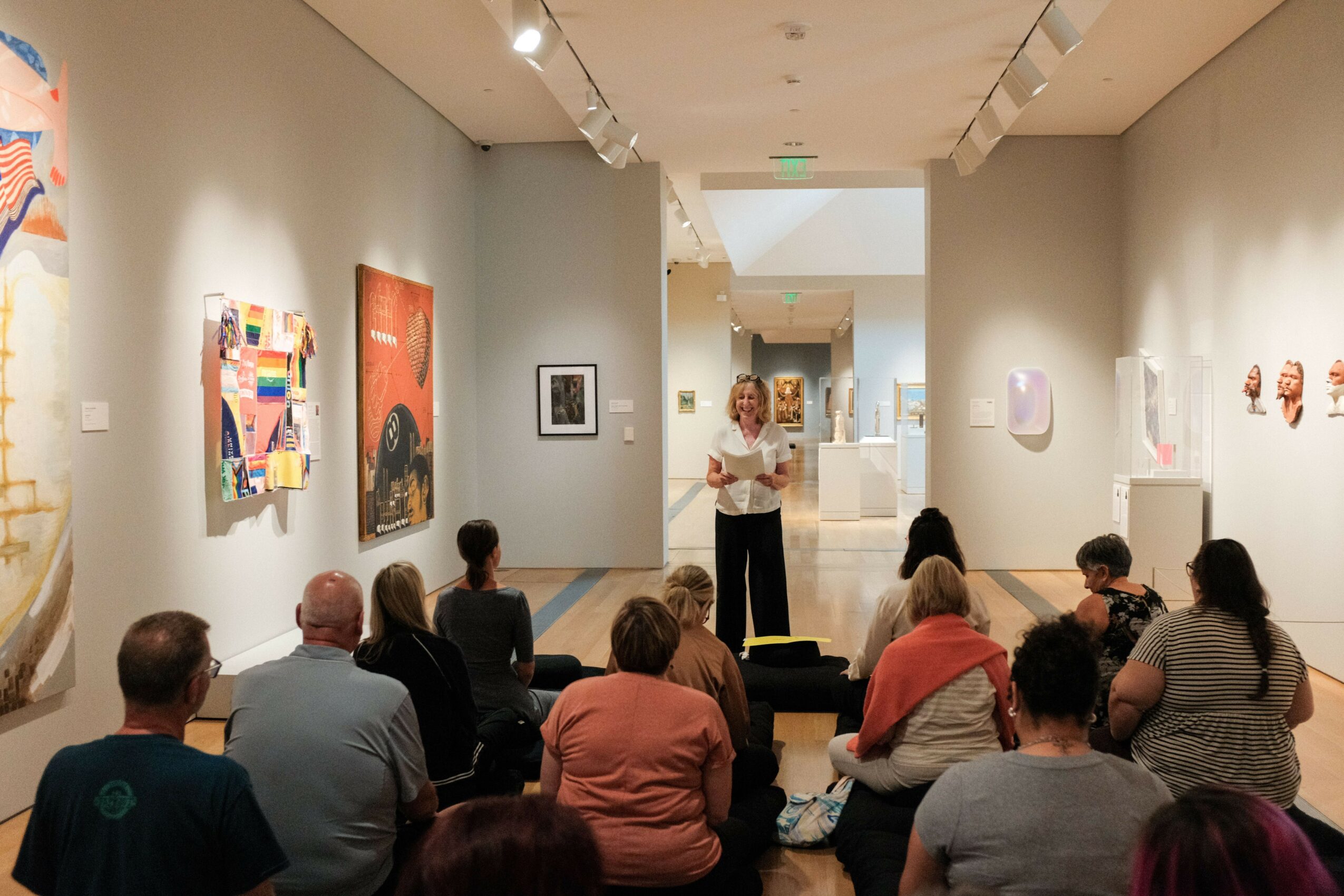

Today we’d like to introduce you to Jill Eggers.
Alright, so thank you so much for sharing your story and insight with our readers. To kick things off, can you tell us a bit about how you got started?
I’m an artist, educator, and an ordained Buddhist monk. I teach a Buddhist practice in an unlikely place–an art studio. There we combine creative play with awareness practices, through a Buddhist lens. Turning our attention toward the creative process itself, letting go of all goals and ideas about what art is or how to ‘be’ an artist, we open to that silent and wide space that is the creative source. We build on these experiences in daily life; this is the practice.
A lifetime of searching for spiritual meaning led to an interest in Buddhism. About twelve years ago, I met a wonderful Buddhist teacher and became very serious in my practice and studies. I was eventually ordained as a monk, in the Hua Yen tradition. I thought about the relationships between Buddhism and creativity. The open and aware space of meditation gives birth to the natural creative impulse. A career as an artist and professor showed me the power of using art and meditation together to find meaning and to live a full, creative life. Bringing these practices together seemed a very natural direction to take.
Painting can be a way to look deeply at the nature of things. Buddhist teacher John Loori said “In studying art and awareness, we are studying something fundamental— the nature of self and reality.” Arts learning opens us. Curiosity, compassion, non-judgmental thinking, and contact with our own being—these are all developed through artistic practice, and meditation.
As a college professor, I was in daily contact with young people who are struggling to exist, in the most profound and fundamental ways. They are seeking help, support and meaning, and tools to work with their own minds. This tsunami of stress, anxiety, and mental health problems is not limited to college students. A this time here seems to be a great openness to learning about Buddhist practices, and to seek meaning. My teaching seeks to offer, in both Buddhist and secular contexts, some immediate tools to help people flourish in their lives and work with the challenges they are facing.
I created the Dharma Studio in my painting studio—a big space in an old former furniture factory in an industrial neighborhood near downtown Grand Rapids, home to artists, photographers, guitar makers, a farm-to-table co-op. The Dharma studio provides an inclusive, welcoming and non-judgmental space to experience mind and creativity, in open, diverse community.
I teach these practices in secular contexts as well. In the Dharma Studio, we consider the ideas through a Buddhist lens. In other settings, people can connect with and examine these ideas in secular ways. I teach meditation classes at the Grand Rapids Art Museum, and workshops for therapists and educators, and health care workers, who want to incorporate these practices into their professional work. I enjoy seeking out and responding to new ways to bring these practices to professionals, spiritual seekers, or anyone who is looking for ways to support their sense of well being, their creativity, their joy and resilience. I also spend a lot of time on my own work, painting in the studio.
Can you talk to us a bit about the challenges and lessons you’ve learned along the way. Looking back would you say it’s been easy or smooth in retrospect?
Making one’s way as an artist presents challenges of finding one’s voice, and figuring out how to work with finantial obstacles. We are all familiar with the notion of the ‘starving artist’. It’s difficult to get by as an artist without other work. Becoming a painter and putting that at the forefront of life was very important to me, but I needed to find a way to support myself. An ongoing series of waitressing jobs that got me through college and beyond didn’t seem like a good long term plan—so while in college, I got a teaching degree as well. I didn’t think I would really like teaching all that much, only that it would give me a steady income. To my surprise I fell in love with it.
That lead to another obstacle: a real internal struggle about the choice between teaching and becoming an artist. In my twenties, I had what you might call an early midlife crisis. I was teaching art in a Chicago high school, in a gang-infested and impoverished neighborhood. The school had a drop out rate of 85%. Conditions were very rough. Despite, or maybe because of the urgent circumstances, I grew to love my job. I loved the deep challenges of finding ways to give something to my students through art. I could see them grow in trust and confidence. The rewards of building meaningful, supportive relationships with them were immense. I wanted to dedicate myself to this work, to the service of others—BUT–I also desperately wanted to be an artist– to realize my capacity as a painter in a serious way. Pursuing the life of an artist seemed a luxury, quite possibly a selfish one, in the face of the urgent needs of the lives of my students.
This was my great dilemma: an ethical and spiritual challenge about how to use my life well. The decision came to a head when I was offered a scholarship to a very good graduate program, and with some ambivalence I left teaching in Chicago to study painting at Yale. But I continued to carry that question throughout my life—how to best use my life in meaningful service, as both an artist and an educator.
Appreciate you sharing that. What else should we know about what you do?
My work as an artist is deeply connected to my teaching. My paintings are based in the forests and wetlands of Michigan. I run, walk, or hike in the woods and trails of West Michigan almost daily. I relate to the forest as a place of joy, and the forest landscape as a place that merges the spiritual and the physical. Thought disappears, and the kaleidoscopic imagery of the forest becomes the crossroads of the physical and the metaphysical. These experiences drive and inform my paintings as well as my Buddhist practice.
My work as an artist and as a Buddhist teacher are both informed by the wish to nourish this fullness of being in others–to help others experience their essential nature and develop creatively. I specialize in these unusual approaches to the Buddhist teachings, that include a deep dive into our creative potential—and in offering these practices in a fluid range of both secular and Buddhist contexts.
The Dharma Studio also offers more traditional Buddhist practices, with weekly public meditations, special meditation and contemplative practices, and other teachings. But overall it is uniquely unlike a more traditional Buddhist teaching center.
We’d love to hear about how you think about risk taking?
I’ve always been one to leap quickly into the unknown. My approach to life has been very intuitive—follow your gut and do what seems to make sense, allowing a lot of uncertainty along the way. My parents taught us to look within for meaning and direction and follow the path that speaks to us with courage and conviction. They also gave us a lot of space and encouragement to take risks, make mistakes, and do things we didn’ t know how to do. This nurtured an ability to trust myself and my intuition, and to take risks in the direction of goals. The risks I have taken have been along those lines—following intuition about life’s decisions, taking chances in my work, speaking up when it may be uncomfortable to do so.
Culturally it seems anxiety around risk-taking has increased in recent years, so I teach about the power and growth that is inherent in healthy risk taking. A foundation of Buddhist thought is that all of life is constantly changing and interdependent. Any illusion that we have control of it is just that. Buddhist practice is about becoming comfortable with uncertainty, with holding one’s center in the midst of change—like riding a spirited horse over fences or through the fields at a gallop. Risk taking is a necessary skill–we need to have the courage of our convictions and move with skill and fluidity through life’s changes, into possibilities.
Is there any pricing information that is relevant to our readers? If so, and if you would like us to share it, please include details (in bullet form) below.
Pricing
- Dharma Studio meditations are free and open to the public
- Classes and workshops at the Dharma Studio have a small suggested donation. Typically a half day workshop has a suggested donation of $20-$25.
- Retreats are priced to cover the costs of the facility rental.
- Any suggested donations go to the costs of operating the Dharma Studio and paying for supplies and materials. The teacher takes no pay for Buddhist teaching.
- My own artwork is available for sale, and can be seen atjilleggers.com. Prices for paintings are available on request, and studio visits are welcome. begin at $600 for small paintings and $2800 for larger works.
Contact Info:
- Website: Buddhist practice: dharmastudio.org; Paintings: jilleggers.com
- Email: [email protected]



















